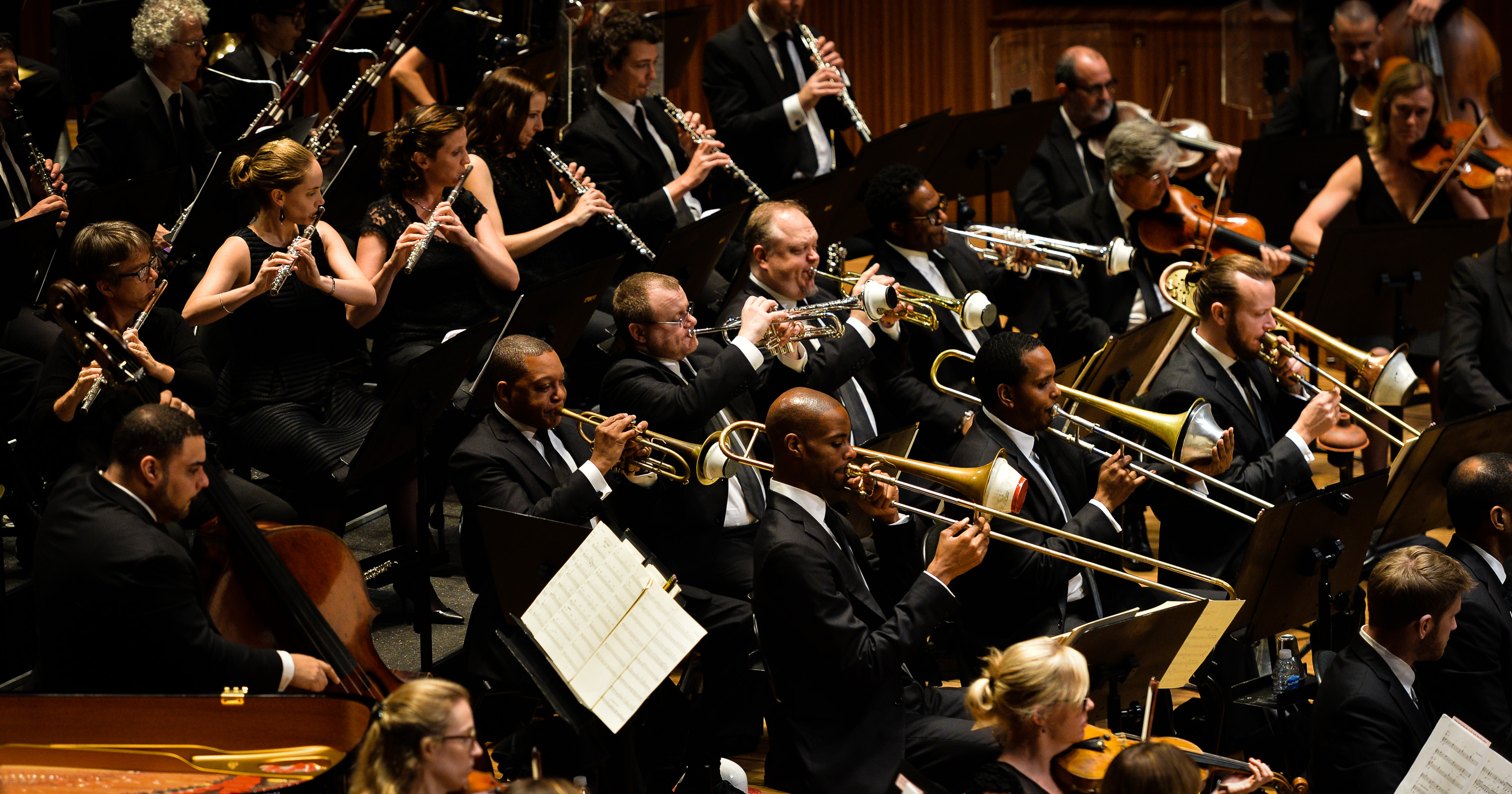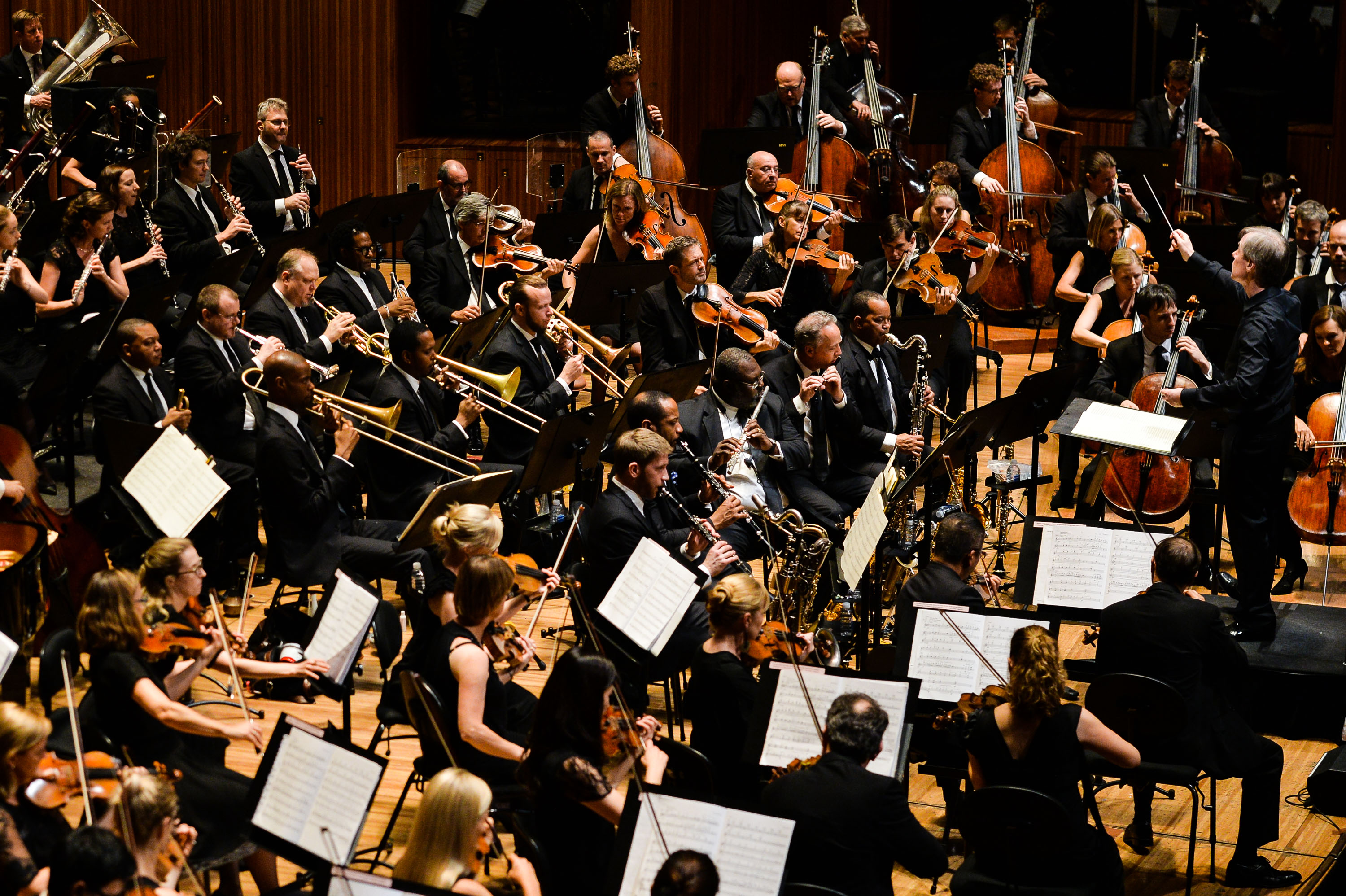★★★★½ Robertson’s opener did mean a thing ‘cos it sure had that swing.
Concert Hall, Sydney Opera House
February 26, 2016
Engaging head and heart is a laudable goal, frequently aimed for, less than frequently achieved, and to that end programming is something of a dark art. That old black magic, however, was definitely in the air at the Sydney Opera House as Chief Conductor David Robertson started his 2016 season with a heady brew concocted out of two perfectly complementary composers: Leonard Bernstein and Wynton Marsalis.
Bernstein was the sassy white guy who most perfectly united his American classical background with the burgeoning jazz music that was pervading the popular culture of his day. A fine composer, the great pity was that the demands of his conducting career left us with so few concert scores. His ballet, Fancy Free, an early work (1943) written at the behest of Jerome Robbins with whom he would go on to create West Side Story 15 years later, is a perfect example of musical fusion. A simple tale of three sailors on shore leave in New York (pretty much the scenario that would inspire his subsequent musical, On the Town), the score embraces elements of jazz, blues and Latin American music.
An adopted New Yorker, the Californian-born Robertson has this music, if not in his DNA, then at least in his blood, bone and sinew. It’s great to hear American music done so well, and the Sydney Symphony seized every opportunity to revel in a bit of good ol’ Yankee Doodle patriotism and pizazz. The score is packed with Lenny’s creative fingerprints, swinging rhythms, swaggering brass, maniacally shifting meters and a general in your face tunefulness. There’s an awareness of the classical trends around him – a touch of Stravinsky, a dollop of Bartók in the darker moments, etc. – but also that irrepressible Bernstein urge to connect and communicate with the man in the street. As Robertson shimmied and shook on the podium, the band took the cue and ran with it building headily towards the three characterful concluding dances – a madcap galop, a tipsy waltz and a red-hot Latin danzón.

For the same composer’s Prelude, Fugue and Riffs, it was all change on the platform as the excellent Francesco Celata (the SSO’s Acting Principal Clarinet) was joined by special guests from the jazz at Lincoln Center Orchestra for a rip-roaring account of Bernstein’s tribute to the great Woody Herman. A brazen and brassy work that channels a similar vibe to Milhaud’s La Création du Monde, the players were unafraid to get down and dirty for some scintillatingly raw and, at times, even sleazy sounds. The maestro took off too (literally, as both feet left the ground at least once), and he bounded from the podium at the end like an excited puppy to credit his magnificent performers.
The second half saw the visiting JLCO players nestled in amongst the SSO for the Australian premiere of Wynton Marsalis’s Swing Symphony, numerically his Symphony No 3. Marsalis is the perfect mirror of Bernstein, approaching classical music from a jazz background, yet achieving an equally impressive synthesis of form. An ambitious work, the Swing Symphony attempts to tell the complete history of jazz in seven movements, and lasts a positively Mahlerian 65 minutes. Marsalis’s skill, it seems, is to have created something as complex in its counterpoint as anything in classical music, yet as easy in its sophisticated syncopations as a good dose of improvisational jazz.
Although on the surface the work is episodic, Marsalis binds it together with key themes, ensuring variety by the way he passes responsibilities around between the orchestra, the jazz band, and the soloists within each. And what soloists! The SSO was on excellent form, but I hope they will forgive me if I single out the guests in their midst for special praise. Given the individual talents of the five saxophonists, as evidenced in their superb individual solos, the blend they achieved when they came together as one was truly remarkable. So too the trumpets (one of whom was a self-effacing Marsalis himself) and the trombones. Double bass and drum kit were equally impressive, demonstrating from the off that we were in the presence of the world’s finest exponents of their craft.

The high-octane Symphony travelled from African drumbeats through ragtime and Charleston all the way to the hybrid works of the 50s and the jazz experiments of the 60s and 70s. Along the way there were moments of Ivesian complexity, a rampant Latin groove-out, a Schoenbergian jazz fugue and a fabulous solo section for full percussion. An interesting side-effect of all that letting down of hair was that just like in a jazz gig, the Sydney audience became increasingly emboldened and started to applaud solos within individual movements. And that was rather refreshing.
This kind of smart yet accessible programming has been a hallmark of the Robertson years, and the SSO has a fascinating series of concerts coming up in the weeks ahead. Those interested can experience the Australian premiere of John Adams’ latest violin concerto, a photo-documented exploration of Messiaen’s From the Canyons to the Stars and the first of a new music series at Carriageworks curated by Roberston and composer-in-residence Brett Dean. Oh, and there’s Conchita Wurst with the SSO as a special Mardi Gras treat. Who says classical music is in a rut?











Comments
Log in to join the conversation.